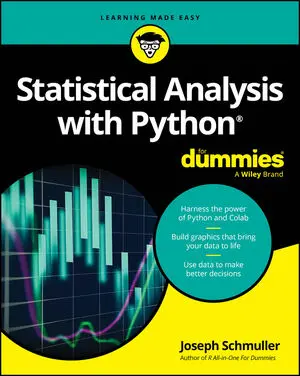Defining organization using lists
The Python specification defines a list as a kind of sequence. Sequences simply provide some means of allowing multiple data items to exist together in a single storage unit, but as separate entities. Think about one of those large mail holders you see in apartment buildings. A single mail holder contains a number of small mailboxes, each of which can contain mail. Python supports other kinds of sequences as well:- Tuples
- Dictionaries
- Stacks
- Queues
- Deques
Of all the sequences, lists are the easiest to understand and are the most directly related to a real-world object. Working with lists helps you become better able to work with other kinds of sequences that provide greater functionality and improved flexibility. The point is that the data is stored in a list much as you would write it on a piece of paper — one item comes after another. The list has a beginning, a middle, and an end. The items are numbered. (Even if you might not normally number them in real life, Python always numbers the items for you.)
Understanding how computers view lists
The computer doesn’t view lists in the same way that you do. It doesn’t have an internal notepad and use a pen to write on it. A computer has memory. The computer stores each item in a list in a separate memory location. The memory is contiguous, so as you add new items, they’re added to the next location in memory.In many respects, the computer uses something like a mailbox to hold your list. The list as a whole is the mail holder. As you add items, the computer places it in the next mailbox within the mail holder.
Just as the mailboxes are numbered in a mail holder, the memory slots used for a list are numbered. The numbers begin with 0, not with 1 as you might expect. Each mailbox receives the next number in line. A mail holder with the months of the year would contain 12 mailboxes. The mailboxes would be numbered from 0 to 11 (not 1 to 12, as you might think). Getting the numbering scheme down as quickly as possible is essential because even experienced developers get into trouble by using 1 and not 0 as a starting point at times.
Depending on what sort of information you place in each mailbox, the mailboxes need not be of the same size. Python lets you store a string in one mailbox, an integer in another, and a floating-point value in another. The computer doesn’t know what kind of information is stored in each mailbox and it doesn’t care. All the computer sees is one long list of numbers that could be anything. Python performs all the work required to treat the data elements according to the right type and to ensure that when you request item five, you actually get item five.In general, it’s good practice to create lists of like items to make the data easier to manage. When creating a list of all integers, for example, rather than of mixed data, you can make assumptions about the information and don’t have to spend nearly as much time checking it. However, in some situations, you might need to mix data. Many other programming languages require that lists have just one type of data, but Python offers the flexibility of using mixed data sorts. Just remember that using mixed data in a list means that you must determine the data type when retrieving the information in order to work with the data correctly. Treating a string as an integer would cause problems in your application.






